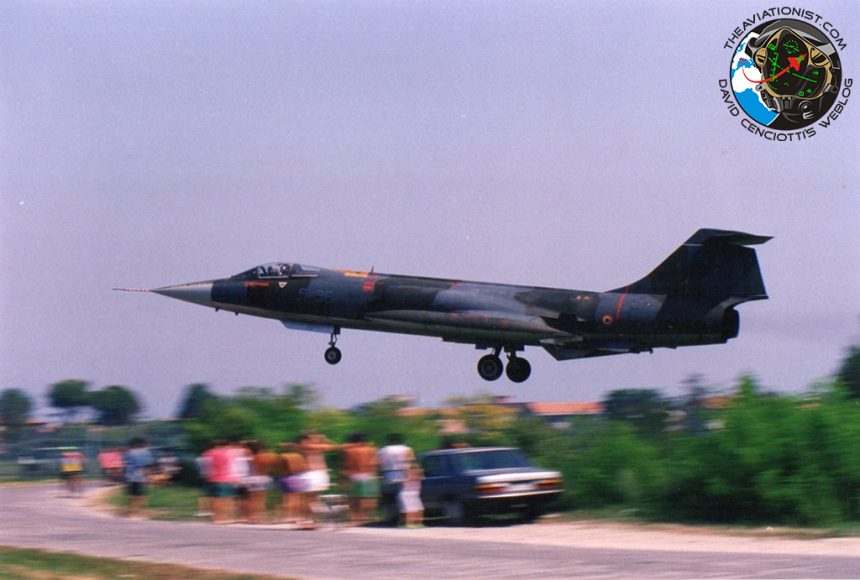2,580 F-104 were employed by the air forces of 15 countries in about 50 years.
The F-104 represented a huge leap forward for all those countries that passed from old subsonic and “forgiving” jets to a multirole bisonic aircraft which called for a much greater concentration on the part of pilots who were often faced with split second decisions.
The transition from the previous generation of aircraft to the high performances of the F-104 was often far from painless. One of the main users of this aircraft, the Luftwaffe, that owned 916 F104Gs, was beset by numerous tragic accidents.
Even if these were to be blamed on human factor and on poor weather conditions that the German pilots had to deal with, rather than on the aircraft itself, the Starfighter was nonetheless undeservedly dubbed the “widow maker”.
An epithet that was firmly rejected by the Italian pilots who have been involved with the F-104 for over forty years and who can only but attest their genuine love for this fighter, appreciate its great power and reliability and who prefer to call it with the nicknames “Spillone” and “Chiodo” (“Nail”).
Abroad the aircraft was most commonly known as “Zipper” or a “missile with a man in it”.
Overall, despite many years of service, the F-104 has proven to have an accident rate that is in line with comparable aircraft, and in some cases much lower.
One of the most fearful things of flying an F-104, was performing a quite “flat” approach at about 180 kts as the one shown in this picture.
Taken by Roberto Botteghi at Rimini airbase between the end of 1980s and the beginning of the 1990s, the photo depicts a Starfighter on short final buzzing people’s heads at very a high speed (for sure higher than that of a modern C-17 or Eurofighter Typhoon).
Unlike what happened to most past and modern planes, the pilot had to keep the throttle at about 80% RPM: with such small wings, the aircraft used a Boundary Layer Control system to blow engine air over the leading edge of the wing and generate enough lift to keep the aircraft flying on approach.
Image credit: Roberto Botteghi

















